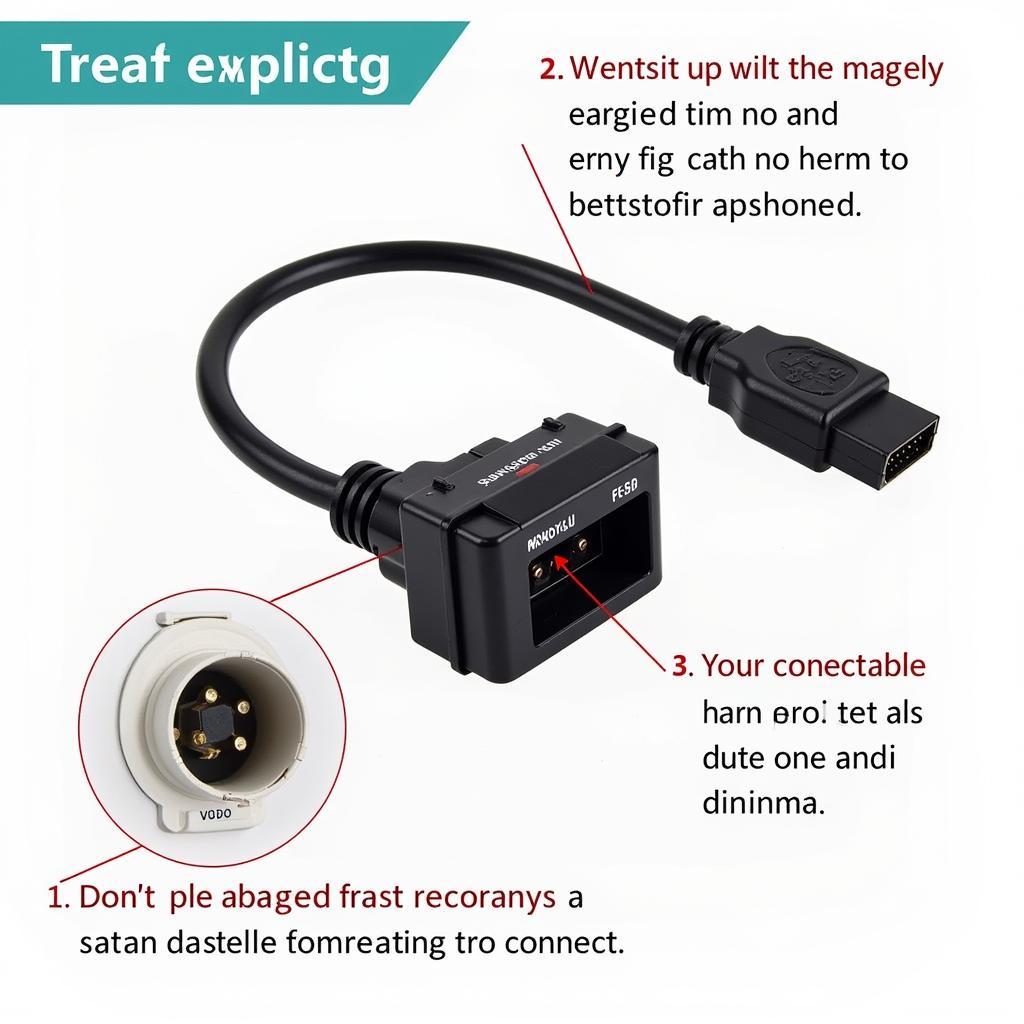The 02401 VCDS trouble code can be a frustrating issue for car owners and mechanics alike. This article will delve into the 02401 code, explaining its meaning, common causes, diagnostic procedures, and solutions, empowering you to tackle this problem effectively.
What Does the 02401 VCDS Code Mean?
The 02401 Diagnostic Trouble Code (DTC) specifically refers to a malfunction within the turbocharger (TC) system, often related to the boost pressure regulation. Using a VCDS (VAG-COM Diagnostic System) interface, this code pinpoints an issue with the “Turbocharger Boost Control Position Sensor Circuit Range/Performance.” This essentially means the sensor responsible for monitoring the position of the turbocharger’s boost control mechanism is sending a signal outside the expected range, indicating a potential problem with the sensor itself, the wiring, or the turbocharger’s mechanical components.
Common Causes of the 02401 VCDS Code
Several factors can contribute to the 02401 error code. These include:
- Faulty Turbocharger Boost Control Position Sensor: The sensor itself might be malfunctioning due to wear and tear, exposure to extreme temperatures, or other environmental factors.
- Wiring Issues: Damaged, corroded, or loose wiring connections between the sensor and the engine control unit (ECU) can disrupt the signal transmission, triggering the 02401 code.
- Vacuum Leaks: Leaks in the vacuum hoses connected to the turbocharger’s control system can affect boost pressure regulation, leading to erratic sensor readings.
- Sticky Turbo Vanes: Variable geometry turbochargers (VGTs) have vanes that adjust to control boost pressure. If these vanes become sticky or seized due to carbon buildup, it can disrupt the boost control and trigger the code.
- Faulty Turbocharger Actuator: The actuator is responsible for adjusting the turbo vanes or wastegate. A malfunctioning actuator can lead to incorrect boost pressure and trigger the 02401 code.
Diagnosing the 02401 Trouble Code with VCDS
A systematic approach is crucial when diagnosing the 02401 code. Here’s a step-by-step guide:
- Connect the VCDS interface: Connect your VCDS cable to the vehicle’s OBD-II port and your computer.
- Scan for fault codes: Start the VCDS software and select the appropriate vehicle model. Scan for fault codes and identify the 02401 code.
- Check Measuring Blocks: Use the VCDS software to access the measuring blocks related to the turbocharger system. Monitor the boost pressure actual and specified values. Discrepancies between these values can indicate a problem.
- Inspect Wiring and Connections: Visually inspect the wiring harness and connectors related to the boost control position sensor and actuator for any signs of damage, corrosion, or loose connections.
- Check for Vacuum Leaks: Inspect vacuum hoses for cracks, leaks, or disconnections. A simple test involves spraying soapy water on the hoses while the engine is running and looking for bubbles.
Fixing the 02401 VCDS Code
Based on the diagnosis, the following solutions might be necessary:
- Replace the Boost Control Position Sensor: If the sensor is faulty, replacement is usually the most straightforward solution.
- Repair Wiring: Repair or replace any damaged or corroded wiring and ensure all connections are secure.
- Fix Vacuum Leaks: Replace any cracked or damaged vacuum hoses and ensure all connections are tight.
- Clean or Replace Turbo Vanes: Cleaning the turbo vanes can sometimes resolve the issue, but in cases of severe damage or seizure, turbocharger replacement might be necessary.
- Replace the Turbocharger Actuator: If the actuator is malfunctioning, replacing it can restore proper boost control.
“When dealing with the 02401 code, it’s essential to address the root cause, not just the symptoms. A thorough diagnostic procedure using VCDS is key to pinpointing the problem and avoiding unnecessary repairs,” advises John Miller, Senior Automotive Diagnostic Technician at CARDIAGTECH.
02401 VCDS Code: Frequently Asked Questions (FAQ)
- What is the 02401 VCDS code? It indicates a problem with the Turbocharger Boost Control Position Sensor Circuit Range/Performance.
- Can I drive with the 02401 code? While you might be able to drive, it’s recommended to address the issue promptly to avoid further damage.
- Is the 02401 code serious? Yes, it can indicate a significant problem with the turbocharger system, potentially affecting engine performance and fuel efficiency.
- How much does it cost to fix the 02401 code? The cost varies depending on the specific cause and required repairs.
- Can I fix the 02401 code myself? Some repairs, like replacing a vacuum hose, can be done DIY. However, more complex repairs might require professional assistance.
- What tools do I need to diagnose the 02401 code? A VCDS interface is essential for accurately diagnosing this code.
- How can I prevent the 02401 code from recurring? Regular maintenance, including inspections of the turbocharger system and its components, can help prevent future issues.
Conclusion
The 02401 VCDS trouble code, while potentially complex, can be effectively diagnosed and resolved with the right approach. Utilizing the VCDS system and following the steps outlined in this article can empower you to address this issue and restore your vehicle’s performance. Remember, understanding the 02401 code is the first step towards a successful repair.
For further assistance, please contact us via WhatsApp: +1 (641) 206-8880, Email: CARDIAGTECH[email protected] or visit us at 276 Reock St, City of Orange, NJ 07050, United States. Our 24/7 customer support team is ready to help. Explore other related articles and FAQs on CARDIAGTECH for more in-depth information on various automotive diagnostic trouble codes and solutions.

